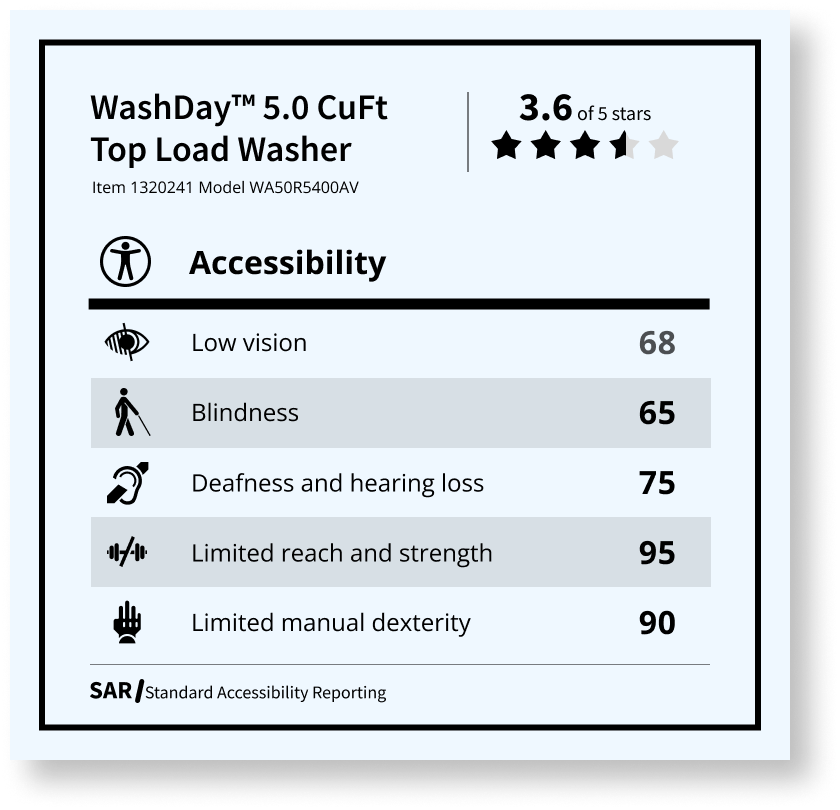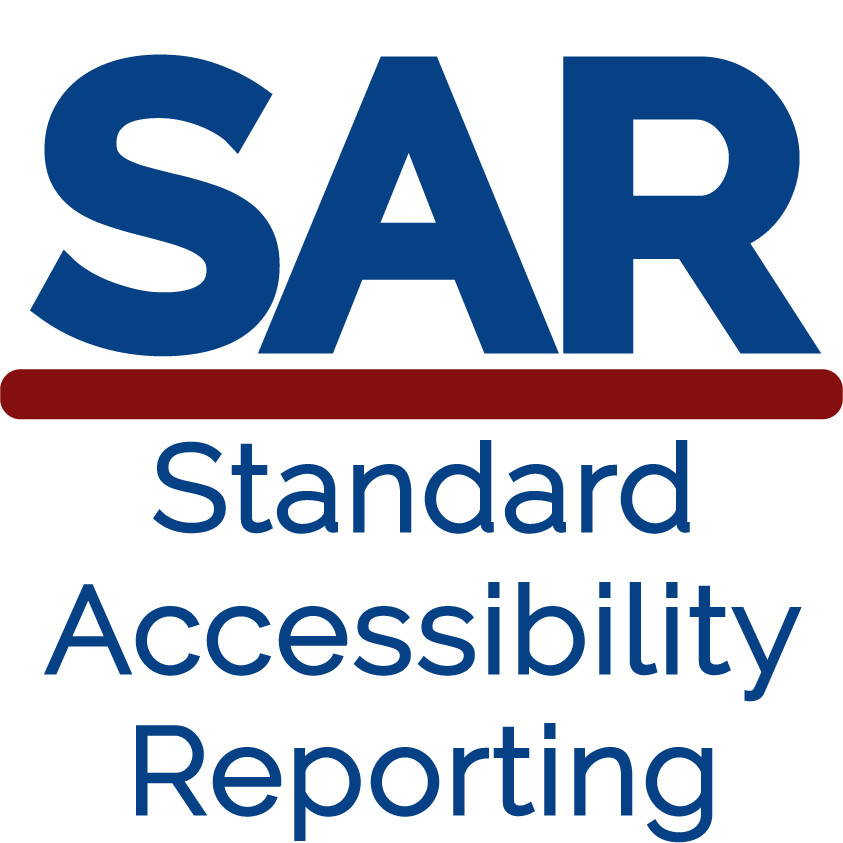The Accessibility Scorecard
A prototype of what’s to come
We’ve studied a variety of different means of communicating product data — Nutrition Facts, Energy Star, Consumer Reports, and Amazon reviews, among others — and examined each on their strengths, weaknesses, and applicability to our purposes.

Our approach
Each disability has a unique impact on a consumer’s ability to use products: for example, deaf and hard-of-hearing users can’t rely on alarms or other audio alerts, while blind users struggle with buttons and interfaces that have no speech output.
Like vehicle safety ratings, the accessibility scorecard will provide an overall score that combines all test results. However, we expect that consumers will want more information related to their own disability type, so there is an option to include another layer of device function scores for each disability category.
Every person experiences their disability differently. A nice-to-have feature for one consumer may be a dealbreaker or a must-have for another — even if they share the same disability. The scorecard lets consumers know whether they should try, buy, or use a product.
With the scorecard, disabled consumers and their families will better understand how well a product fits their needs — at the point of sale. By posting this information, retailers and manufacturers can reduce the number of returns from consumers who find barriers — after they’ve made the purchase.
Standard Accessibility Reporting is working to make this proposed scorecard a reality for your shopping experience.
Find out more…
